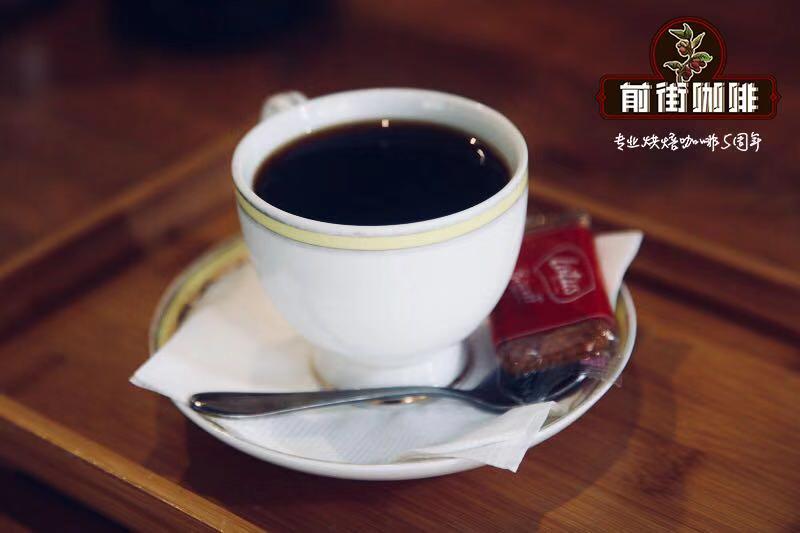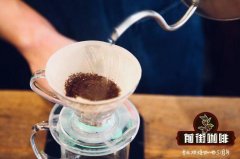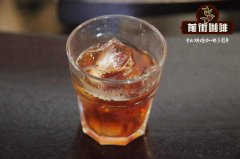How can the moisture content of raw coffee beans be on the high side? teach you how to test the water content of coffee beans

Professional coffee knowledge exchange More coffee bean information Please pay attention to coffee workshop (Weixin Official Accounts cafe_style)
(1) Too high or too low a moisture content affects the cup quality of coffee beans; and (2) you buy coffee instead of water. In general, moisture content greater than 12% is easy to cause coffee beans to grow mold, while moisture content less than 9% makes coffee beans prone to shrinkage.
How to detect water?
How do you determine the moisture content of coffee? Generally, food and drug supervision is tested according to international, national or industry standards. For raw coffee beans, China is currently using the industry standard issued by the Ministry of Agriculture in 2006, which stipulates that the moisture content of coffee beans should be less than 12%.
The water content test process is still referenced to ISO1447, which has been in use since 1978.
The following is the ISO test method, in short, is to weigh M0 beans, single layer placed on a plate, and then put into a 130° oven, 6 hours later put into a dryer to cool to room temperature weighing M1, moisture content P1=(M0-M1)/M0. Then put it into the oven again for 4 hours, put it into the dryer again, cool it to room temperature, and weigh it as M2, P2=(M0-M2)/M0, then the final moisture content P=P1+(P2-P1)/2.
However, these methods are obviously not convenient and fast, and are not suitable for the daily business of bean pickers. Therefore, some companies have developed portable Detection Tools for daily detection of moisture content in food, such as portable water activity meters, which can be used to measure the water activity of coffee beans.
Water activity mainly reflects the water state under the state of material equilibrium, that is, the ratio of the vapor pressure P of water in the sample at a certain temperature to the saturated vapor pressure P0 of pure water at the same temperature. If the humidity of the environment around the food is low, the moisture in the food will continue to evaporate into the air; if the ambient humidity is high, the dry food will absorb moisture and gradually increase the moisture until it reaches equilibrium. Whether food is contaminated by microorganisms is determined by the content of free water in the food, that is, the degree of dissociation between water and food. In order to accurately reflect the water content of food, it is usually expressed by food water activity Aw.
There is a certain Aw threshold for all kinds of microbial activities and chemical and biochemical reactions. Most bacteria cannot reproduce when the water activity is less than 0.90. Most yeasts need water activity greater than 0.87 to reproduce. Most molds can grow in the range of water activity from 0.80 to 0.87. When the water activity is less than 0.5, no microorganism can survive.
Most water activity meters on the market are based on the equilibrium relative humidity method, that is, the sample to be tested is placed in a closed container, the water molecule exchange equilibrium is carried out between the sample to be tested and the environment in the closed space at constant temperature, and the pressure in the container (such as measured by a manometer) or relative humidity (such as measured by an electronic hygrometer or a dew point meter) is measured after equilibrium (constant weight of the sample) is reached.
At present, there are NOVASINA water activity meter in Switzerland, HygroPalm portable water activity meter in Switzerland ROTRONIC company, PawKit portable water activity meter in DECAGON company in America, AquaLablite standard portable water activity meter and so on. However, the high price of these products discourages SMEs. Among the water activity meters made in China, the famous ones are BDZ3-HBD5 water activity meter developed by Beijing Zhongxi Yuanda Science and Technology Co., Ltd. and AW-1 intelligent water activity meter developed by Wuxi City Bibo Electronic Equipment Factory in Jiangsu Province.
In summary, the moisture content measured by the national standard method as mentioned above refers to the total amount of water contained in coffee beans. Therefore, to some extent, during the storage of green coffee beans, the moisture content is not a reliable indicator to predict microbial reactions and chemical reactions, and the water activity of coffee beans is more reflective of the quality of the current coffee beans, and its value is preferably between 0.5 and 0.55. Above 0.6 there is a risk of mold growth and below 0.4 there is a possibility of coffee oil oxidation and deterioration.
END
Important Notice :
前街咖啡 FrontStreet Coffee has moved to new addredd:
FrontStreet Coffee Address: 315,Donghua East Road,GuangZhou
Tel:020 38364473
- Prev

Do you know the reason for the three-stage water injection of hand-brewed coffee | teach you the skills of hand-brewing coffee
Professional coffee knowledge exchange more coffee bean information please follow the coffee workshop (Wechat official account cafe_style) three-stage water injection method which we most often use and often see. This technique is suitable for light-roasted, medium-and medium-roasted coffee beans. The stage-by-stage extraction method of three-stage water injection is richer than that of one-knife flow, and it can make clear before coffee,
- Next

Let's find out how many coffee flavors there are | what are the differences between different coffee flavors?
Professional coffee knowledge exchange more coffee bean information please follow the coffee workshop (Wechat official account cafe_style) Africa Africa if you go to Africa to buy coffee, you will usually look for beans with obvious acidity and fruit flavor. If it is in Ethiopia, beans with obvious acidity and fruit flavor are good enough. In addition, in Kenya, it is full of grapefruit aroma and
Related
- Beginners will see the "Coffee pull flower" guide!
- What is the difference between ice blog purified milk and ordinary milk coffee?
- Why is the Philippines the largest producer of crops in Liberia?
- For coffee extraction, should the fine powder be retained?
- How does extracted espresso fill pressed powder? How much strength does it take to press the powder?
- How to make jasmine cold extract coffee? Is the jasmine + latte good?
- Will this little toy really make the coffee taste better? How does Lily Drip affect coffee extraction?
- Will the action of slapping the filter cup also affect coffee extraction?
- What's the difference between powder-to-water ratio and powder-to-liquid ratio?
- What is the Ethiopian local species? What does it have to do with Heirloom native species?

